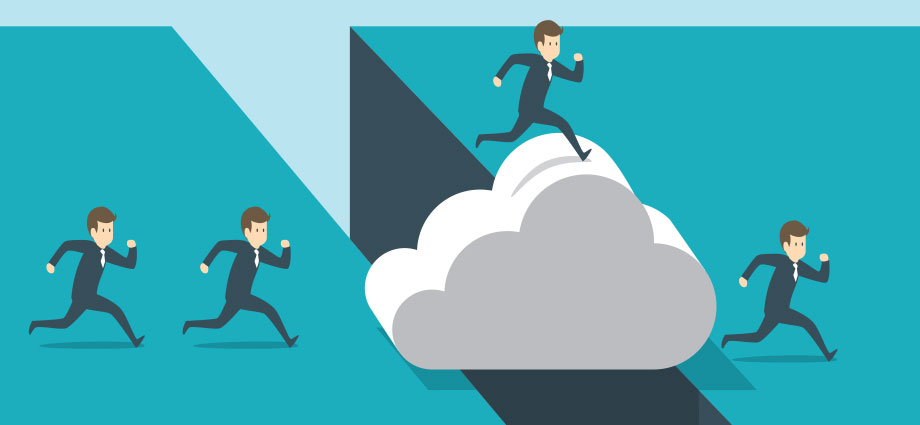
It’s a common thought among system integrators: “What if we replace our aging legacy systems with newer, interconnected IoT-driven systems?”
Of course, that may seem like the be-all, end-all, quick-and-easy solution, but that approach is a lot like gutting a home for a complete remodel: a great idea but much too costly.
The truth is most organizations and industrial enterprises don’t have the luxury or budget to rip everything out of the building management system (BMS) so they can start all over with the latest-and-greatest technologies.
Fortunately, there’s no need to start from scratch when dealing with legacy systems. You can keep a mix of old and new systems with no-hassle legacy transformation and integration. Keep reading to learn how.
What is a legacy system?
A legacy system is a still-functioning yet outmoded system, device, or technology. It’s called “legacy” often because the system predates the standards and protocols of today’s Internet of Things (IoT) solutions.
Most legacy systems were developed prior to the adoption of open-source protocols, and many were built long before the advent of connected technologies. What that means is that these legacy systems are unlikely to be compatible with advanced IoT and IIoT devices, cloud-services, and modern-day protocols.
In summary, the main differences between legacy systems and modern technologies are:
- Legacy systems, which include controllers, equipment, and instrumentation, limit the ability to fully automate operations.
- State-of-the-art systems, which include sensors, controllers, and protocol gateways, enable equipment integration and cloud automation capabilities.
Now that it’s clear what a legacy system is, here’s a look at some examples (and challenges) of legacy systems used for building automation, life safety, industrial automation, and energy metering.
Examples and Challenges of Legacy Systems
SCADA Systems
Plenty of factories, manufacturing plants, and industrial environments use legacy SCADA or Supervisory Control and Data Acquisition systems. These systems were used as a central hub for basic monitoring and control. Although Legacy SCADA may use Modbus as a protocol, most use older protocols, such as Open Platform Communications or OPC. (Note: OPC UA is not the same as classic OPC, and is a more current standard.)
- Challenge of legacy SCADA: Outdated, proprietary, or incompatible protocols, combined with a lack of modern security features
- Result: Prevents seamless integration and full automation with modern IoT protocols, including RESTful API and MQTT; opens the door to security-related vulnerabilities
Building Management Systems (BMS)
Although legacy BMS using BACnet or LonWorks protocols can still control HVAC and other building systems, they may have difficulty integrating with newer Industrial Internet of Things (IIoT) devices, such as IIoT-enabled lighting or temperature sensors.
- Challenge of legacy BMS: Cost prohibitive and technically challenging; lack of advanced security
- Result: Requires a huge capital outlay, limits interoperability, and exposes the organization to potential cyberattacks
Devices
Because legacy devices, such as sensors, use older protocols or require hardwiring (vs. wireless communication), legacy devices do not easily integrate with today’s modern IoT platforms and cloud-based solutions.
- Challenge of legacy devices: Limited or no connectivity capability
- Result: Offers limited processing power, storage capabilities, and data sharing integration
Why You Shouldn’t Replace Legacy Systems (and What to Do Instead)
MSA helped pioneer fully integrated, connected workplaces, so we understand the many benefits of smart buildings and smart factories:
- Lower energy costs and reduced carbon footprint
- More efficient operations
- Improved production performance
- Increased flexibility and scalability
- Enhanced worker safety
- Real-time insights and remote notifications
While it may seem as if legacy systems stand in the way of achieving those outcomes, the right protocol gateway can help bridge the gap between legacy systems and interoperability.
4 Ways to Bridge the Gap Between Legacy Systems and Advanced IoT Technologies with FieldServer
1. Protocol Translation
Protocol gateways, like MSA’s FieldServer™, facilitate communication between disparate devices—even those with outdated or differing protocols. The role of a gateway is to convert a variety of data formats into something that’s easily understood. FieldServer gateways essentially act as a communication translator and facilitator to allow systems that speak different languages to “talk” with one another and seamlessly exchange data and information.
2. Data Normalization
Legacy systems output data in formats that are incompatible with connected, digitized systems. A protocol gateway normalizes the data by converting it to a standardized format that can be interpreted in an automation system. For example, it can convert legacy-generated analog signals into digital values that can more easily be interpreted.
3. Data Aggregation
FieldServer gateways are designed to aggregate, filter, and preprocess incoming data before transmitting the data to the BMS or other system. For instance, FieldServer gateways can take data from multiple sensors and translate it into a single set of data points, providing insight on such parameters as temperature or humidity.
4. Extended Lifespan
Because FieldServer gateways enable communication between legacy systems and advanced IoT devices, there’s no need to replace fully functioning older equipment. This not only reduces capital costs, but it also simplifies and speeds integration.
Conclusion
IoT legacy systems are older devices, equipment, or systems that were not originally designed for the interconnected, data-driven world of modern IoT. While these systems are still in operation, their limited connectivity, outdated protocols, and lack of integration capabilities can hinder their ability to interact with newer IoT technologies.
Solutions like protocol gateways, edge computing, and cloud-based platforms can help integrate legacy systems into modern IoT ecosystems, enabling organizations to maximize the value of both their old and new technologies.
Ready to stop letting legacy controllers, equipment, and instrumentation be the black hole that limits your ability to fully automate operations?
Open your automation system capabilities up with MSA’s FieldServer versatile suite of gateway products, including Modbus, EtherNet/IP, GE-EDG, and more state-of-the-art protocols. Reach out to us to talk about creating a seamless connection of old and new so you can keep your legacy equipment while fully enabling your advanced technologies, networks, and systems.






